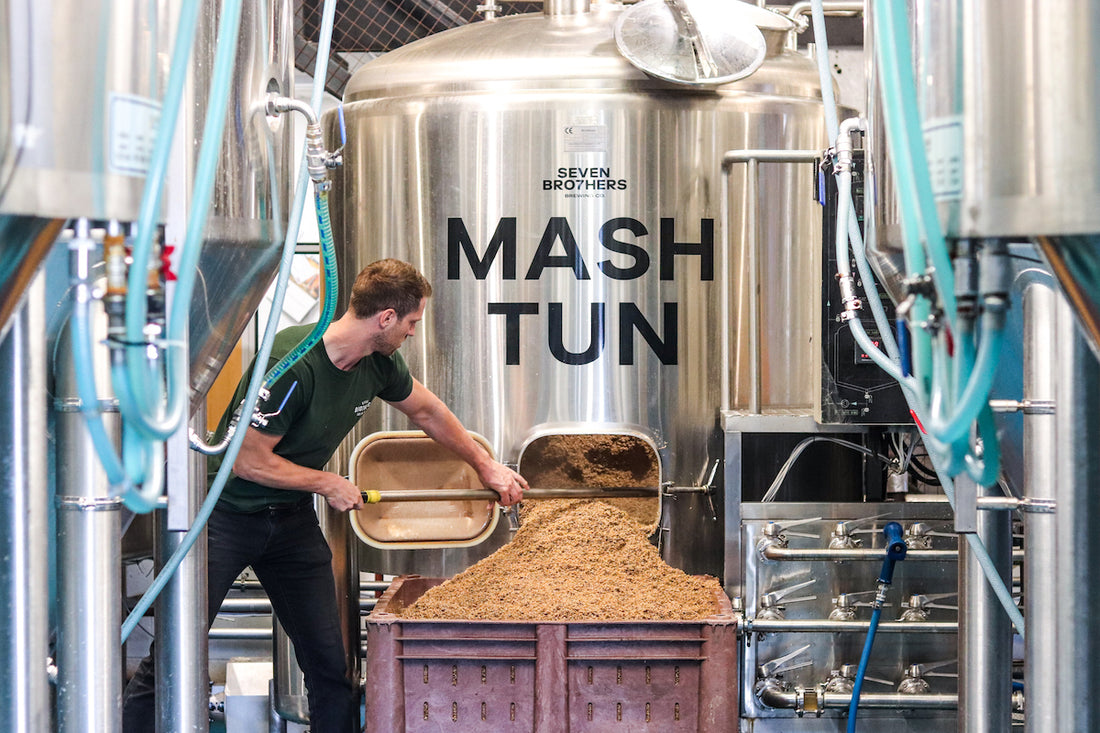One of humankind’s finest creations, this humble drink has been made throughout human history by all kinds of folks, from monasteries to mega-conglomerates. But it’s surprisingly simple, consisting of a mix of cereal grain, hops, yeast and water.
Hops are the flowers of the hop plant (scientific name: humulus lupulus), part of the hemp family. They’re used as part of the bittering, flavouring and stabilising process of beer production.
Cereal grains are the world’s most widely grown food source, and are rich in vitamins, minerals and carbohydrates. Beer’s most common grain ingredient is malted barley, although sometimes wheat, maize and rice make an appearance.
Yeast is a fungal microorganism – but don’t let that put you off. It’s a living being that is crucial to the fermentation stage – converting carbohydrates into alcohol.
And water – well, you probably know that one already. The purer the water, the better the beer.
Let’s start with an important distinction – all beers are either lager or ale. The difference between them mostly lies in the temperature they’re fermented at, as well as the yeast involved in their production.
What is the brewing process?
Beer brewing can be a really complicated process, and differs depending on the size of the operation. A large multinational will have a different process than a small independent. But you can break it down into the same approximate process – first the brewing, then the fermenting / maturing, then the packaging. Pretty much every step in the below process can be tweaked, and the differences this tinkering produces are what sets different beers and breweries apart.
We've already discussed the main ingredients of beer in another blog, but here's how they all come into the brewing process.
Firstly, barley is soaked, germinated and roasted to produce malt.
This is then added to water, boiled and stirred in a mash tun (a big metal barrel), breaking down starches to create the wort – a sweet and sticky malty concoction (it’s rather nutritious on its own, and some drink it hot like a cup of tea.)
The wort then gets filtered into the kettle (a big copper pot – like the classic kitchen gizmo, but bigger), which is brought to the boil. The hops are then added – an important part of the flavouring process. Hops bring the bitter taste to the beer, with some aromatic floral overtones too.
This hoppy wort mixture is then cooled to a temperature where yeast can survive (between 23°C and 36°C). The yeasts here are what make the difference between lager and ale. Lager usually makes use of Saccharomyces pastorianu, a bottom-fermenting yeast. Ale would contain Saccharomyces cerevisiae (sometimes called Brewer’s Yeast) and is top-fermenting.
The yeast is what does the fermenting – consuming the sugars in the mixture and releasing ethanol, a type of alcohol. Lager is ‘cold-fermented’, so the temperatures here are lower (between 10 and 15°C), and ale is ‘warm-fermented’ (between 15 and 20°C ). These differences cause the variations in taste, texture and crispness that are familiar to seasoned beer lovers.
When the yeast is exhausted, the beer is moved to a ‘conditioning tank’, where it’s kept to mature. The amount of time varies – for hoppy beers this might only be two weeks, as they need to be consumed fresh. Some lagers might be left for over a month. It’s often the smaller craft breweries that have the capacity to experiment with maturation lengths, as they aren’t forcing huge orders out the door with short brewing times. They also have the freedom to experiment with vessels the beer is kept in – oak casks can be used for a more earthy flavouring.
Then, it’s into barrels, bottles and cans, and transported around the world for your drinking pleasure.
